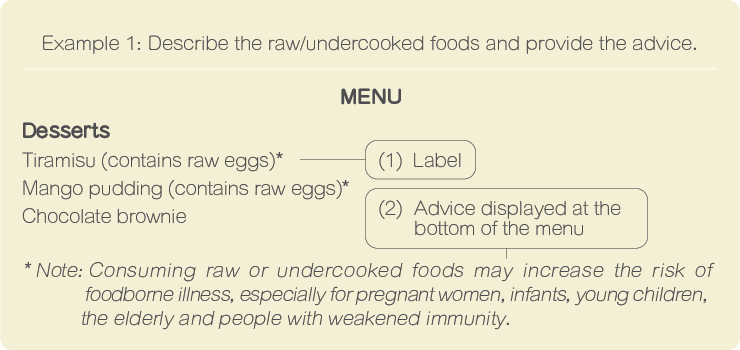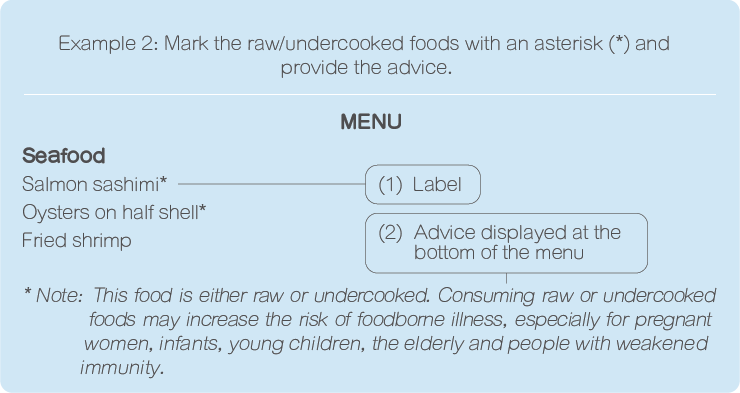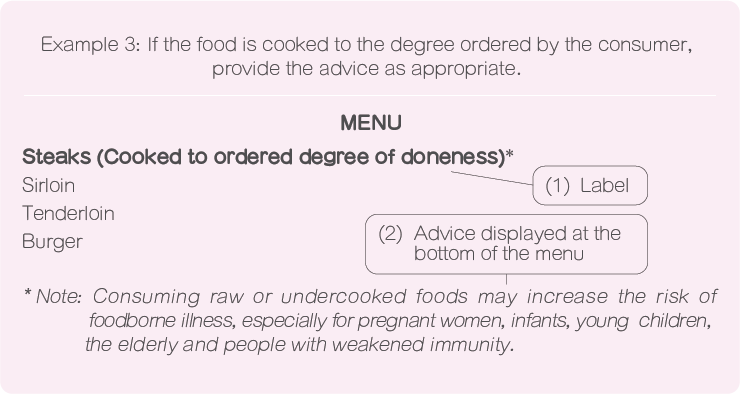
While it is understandable that restaurants may choose to accede to consumer's desire for raw/undercooked food, a recent focus group meeting conducted by the Centre for Food Safety (CFS) found that local consumers are often not aware that the foods they order are raw/undercooked and they have difficulty in determining whether the dish contains raw/undercooked ingredients such as raw eggs.
Susceptible populations include pregnant women, infants, young children, the elderly and people with weakened immunity are at higher risk of being infected by foodborne pathogens, more likely to develop severe symptoms and even face the risk of death.
In this regard, the CFS has issued a set of trade guidelines aiming to facilitate food businesses in informing consumers of the increase risk of consuming raw/undercooked foods and ingredients in ready-to-eat foods served to them. Consumers can be informed by brochures, advisories on signs or menus, table tents, labelling or other effective written means. The following is an example of consumer advice that restaurants can provide, and it applies to raw/undercooked high-risk foods:
Consuming raw or undercooked foods may increase the risk of foodborne illness, especially for pregnant women, infants, young children, the elderly and people with weakened immunity.
Along with consumer advice, food businesses can also describe the food items that are served raw/undercooked or mark them with a symbol (e.g. an asterisk (*)) on the menu. If the food is cooked to the degree ordered by the consumer, provide the advice as appropriate. Examples are set out below for reference.


Risk of High-risk Foods Who are the Susceptible Populations?
Safer Alternatives Five Keys to Food Safety Tips for Eating Out FAQs